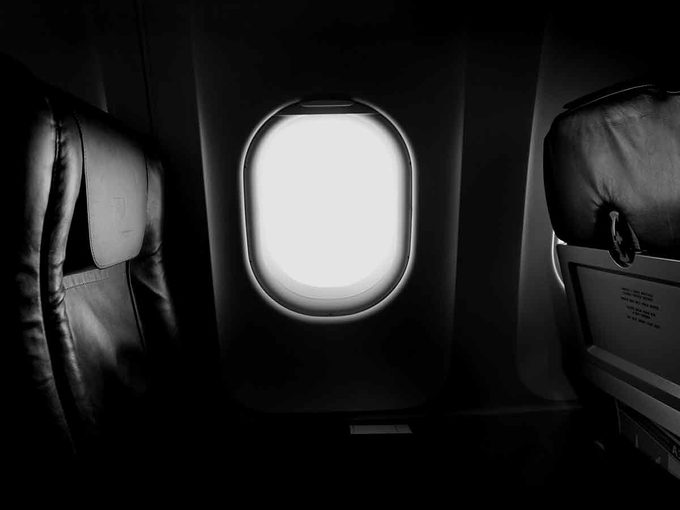How to Germ-Proof Your Plane Seat, Inspired by Naomi Campbell

You may convert your seatmate, too.
No one takes airplane cleanliness as seriously as Naomi Campbell (we’re obsessed with this video, especially at 2:50), but perhaps we all should be. Research has shown that if you’re on a plane near someone who has the flu, there’s a good chance you’ll get sick, too. You can even get sick from the germs that previous travellers have left behind—but, there are things you can do to protect yourself.
There’s a reason to be concerned.
You may think you can only get sick on a flight from breathing the air of fellow passengers who are coughing and sneezing. But people more often get infected by coming into contact with germs on a contaminated surface and touching their eyes, nose, or mouth, says Irwin Stromeyer, founder of Sterile Space Infection Defense. From there, the germs just need warmth, moisture, and a food supply to start multiplying. For example, in just eight hours, just one cell of E. coli can become a colony of more than 12 million cells. “That’s way more than enough to make you horrifically sick,” Stromeyer says.
Even your tray table alone likely has more bacteria than a toilet seat or a cellphone. For example, one study revealed that tray tables contained more than 2,000 colony-forming units of bacteria per square inch. To put that in perspective, swabs of cellphones have shown around 27 to 30 colony-forming units per square inch. “So they’re filthy,” says Debra A. Goff, Pharm.D., an infectious disease specialist at Ohio State University. “And they’re never cleaned.” So the next time you’re eating on an airplane’s tray table, remember this detail, and also the best foods to prevent jet lag.

Fortunately, though, Goff has a plan for how to germ-proof your plane seat.
First, pack a new bag of hand wipes and check to see that they’re antibacterial. “There’s a lot of them that are just hand wipes, meaning they’re basically water with a little aloe to keep your skin moist, but they’re not antibacterial,” Goff says. “So you just have to make sure that they actually say that on the package.”
The distinction? Antibacterial wipes contain alcohol and are FDA-approved to actually kill bacteria, she says.
Then once you’re in your seat, Goff says the best defense against getting sick is self-defense. There are five “high-touch” areas that Goff always sanitizes with antibacterial wipes:
- The seatbelt handle.
- The air vents. “I close the air vent because if there’s bad air in the plane, that’s what’s circulating on top of you,” Goff says.
- The light and call button.
- The armrest and recliner button.
- Most importantly, the tray table.
So get a bag of wipes and hand them out to receptive fellow passengers. “Unlike sharing bacteria and viruses, this is something you want to share,” Goff says. “It’s a habit worth spreading.” For more tips, just see
Now that you know how to germ-proof your plane seat, next check out 10 nutritionist-approved tips for staying healthy when flying.




